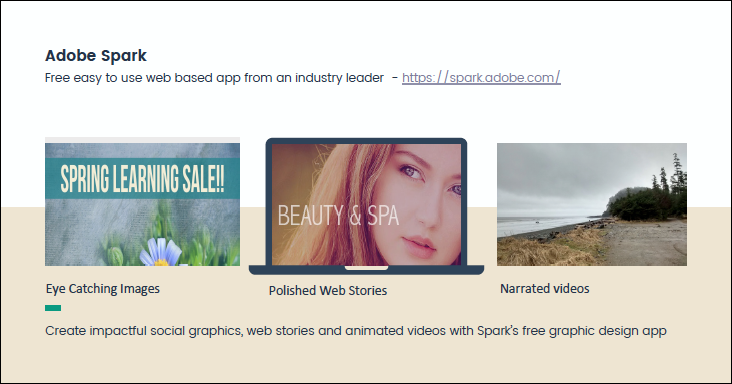by June Kaminski, RN MSN PhD(c)
The COVID-19 pandemic of 2020 has impacted nursing in many ways, including nursing education. Innovative ways to deliver practice, lab and theory within nursing programs has been championed by faculty and encouraged by licensing and accreditation organizations. All voice the same message: Let us support our students to continue to succeed and graduate, despite the obstacles and restrictions imposed by the pandemic.

As universities and colleges embrace online learning to weather this storm, faculty are delving into online teaching – sometimes, for the first time. Faculty are looking for inventive ways to not only deliver theory content via distance, but also how to offer simulations, labs, and alternate experiences for at least some of the clinical practice hours.
Nursing program administrators and faculty are not only responsible for modifying delivery, but they must also track changes made and monitor the outcomes. “Educational institutions will need to monitor the feasibility and effectiveness of alternate practice learning arrangements because multiple contextual factors in different geographic locations will impact the arrangements educational institution will be able to use over time. Educational institutions are responsible for documenting and tracking the modifications made to programs during this period, including changes in access to clinical placements and alternate methods of course delivery” (BCCNP, 2020, p. 1).
The Canadian Association of Schools of Nursing (CASN) is considered “the voice of nursing education in Canada and the national accrediting body for nursing education. Its members are the 95 schools of nursing in Canada offering a baccalaureate and/or graduate nursing degree.
In responding to COVID-19, CASN has adopted the following position:
- High-quality nursing education must be maintained to safeguard the health of Canadians:
- Graduation of nursing students should not be delayed given the urgent health service needs;
- Nursing faculty/instructors must maintain their educator role during this crisis as nursing education is essential; and
- Creative and appropriately supervised ways of optimizing entry-to-practice competencies in senior students while supporting the delivery of health care services during this crisis is a priority.
As the accrediting body for nursing education, CASN will accept documented, innovative curricular changes that allow students to avoid delays in graduation and support health service delivery needs during the COVID-19 pandemic “(CASN, 2020, p. 1).
In order to meet these expectations, schools of nursing must embrace inventive, virtual, resources. Open resources are most welcome, since budgets are often tight. The following resources are our recommendations for open-source, readily available resources, designed by experts in the field.
Recommended Resources

Books
Creative Clinical Teaching in the Health Professions (2019). https://clinicalteaching.pressbooks.com
This Canadian peer reviewed open-source e-book is a must-read for nurses and other health professionals who strive to teach with creativity and excellence in clinical settings. Each chapter presents current evidence informed educational practice knowledge.
Vital Sign Measurement Across the Lifespan (2018) https://pressbooks.library.ryerson.ca/vitalsign/
Another Canadian open-source textbook intended to support best practices in vital sign monitoring. “Using a multi-media approach, it will provide opportunities to read about, observe, practice, and test vital sign measurement.”
Clinical Procedures for Safer Patient Care (2015) https://opentextbc.ca/clinicalskills/
This Canadian “open educational resource (OER) was developed to ensure best practice and quality care based on the latest evidence, and to address inconsistencies in how clinical health care skills are taught and practised in the clinical setting.”

Videos
University of BC School of Nursing. A Triple Win for Nursing Education.
https://nursing.ubc.ca/news-events/news-story/05-may-2020/triple-win-nursing-education
and Video: UBC Nursing Responds: A Triple Win.
This article and video present an excellent learning activity that can be done during isolation.
Canadian Nursing Association. COVID-19 Video Diaries: Behind the Mask
https://cna-aiic.ca/en/coronavirus-disease/faqs-and-resources#cnaResources
The CNA offers this video series, featuring interviews with nurse experts about their practice and experiences with COVID-19, in a variety of practice settings. They also offer several other resources including fact sheets, learning resources, and FAQs about COVID-19.
The Online Lecture Toolkit
https://www.onlinelecturetoolkit.com
This site offers wonderful user-friendly resources for faculty interested in creating effective videos for online learning.
Lippincott Nursing Center Video Library
https://www.nursingcenter.com/journals-articles/video-library
“Learn more about the issues modern-day nurses are facing and how to deal with them. We cover medical topics like managing pain appropriately during the opioid crisis and how to prevent sepsis, along with a variety of workplace topics, such as bullying, stress and leadership.”

Podcasts
Nurse Educator Series – Nurse Educator Tips for Teaching
https://podcasts.apple.com/us/podcast/nurse-educator-tips-for-teaching/id1467432231
This collection offers over 70 podcasts focused on innovative tips to improve your teaching via Apple Podcasts (listen on the web or through Apple)
Some examples of these podcasts include:
- COVID-19: Infection Prevention content for Prelicensure Nursing Students 7/3/20
- Virtual Clinical Practice: A Cohesive Plan 3/28/20
- Virtual Simulation Integration in a Nursing Curriculum 3/27/20
- Disaster Preparedness Education for Nursing Students 3/25/20
- In-simulation Debriefing 3/25/20
- Moving from Classroom to Online: Creating an Online Clinical Practicum 3/24/20

Webinars
CASN. (2020). Webinar: Use of Virtual Reality Simulation for Community Health Clinical
CASN presents this innovative approach to community health practice in education.
CASN (2020). Virtual Simulation Vendor Showcase Webinar
Useful webinar that introduces various available simulation programs for faculty to consider.
Canadian Nurses Association Progress in Practice Webinar Series
CNA presents a series of webinars that can be used in nursing education and practice.
College and Association of Registered Nurses of Alberta Webinar Collection
https://nurses.ab.ca/practice-and-learning/learning-opportunities/webinars
CARNA offers some interesting webinars that can be woven into class work, including one on called The nursing informatics journey and the future by Dr. Kathryn Hannah.
Registered Nurses’ Association of Ontario Archived Webinars
https://rnao.ca/events/archived-webinars
RNAO also offers a rich collection of archived webinars. One that really stood out is Traditional Indigenous Approaches to Mental Health and Well-Being of Health-Care Providers Supporting First Nations During the COVID-19 Pandemic led by Kahontakwas Diane Longboat.

Games and Simulations
CAN-SIM. (2020). COVID-19 Assessment And PPE https://www.casn.ca/2020/06/webinar-use-of-virtual-reality-simulation-for-community-health-clinical/
CAN-SIM also offers about a dozen more free virtual simulations for faculty to use with students at http://www.can-sim.ca/games/lp-courses/
National League of Nursing. Virtual Simulation Options for Undergraduate Nursing Students
The NLN offers a robust list of links and descriptions of a variety of virtual simulation opportunities to use in nursing education.
Centennial College, Ryerson University, and George Brown College – Virtual Healthcare Experience
https://de.ryerson.ca/games/nursing/hospital/index.html
“This portal provides healthcare students and professionals with an experiential learning opportunity for practising client care in a safe virtual environment. Here you can access a number of simulation experiences that will engage you in clinical decision making.”
Montgomery College Nursing Simulation Scenario Library
“Each library listing contains video (used either independently or with accompanying document(s) to enhance education using simulation in any setting) and accompanying documents (used as guides for educators to recreate content in areas relevant to practice).”
Simulation Canada offers a robust collection of COVID-19 Simulations
http://www.sim-one.ca/community/news/covid-19-simulations

Collections
National Center for Interprofessional Practice and Education – Resource Center
https://nexusipe.org/informing/resource-center-start
This organization offers a rich resource center, a “digital library of interprofessional practice and education-related content”.
Nurse Educator Network
https://nursingeducationnetwork.net
This site provides a platform where nursing faculty can share open source nursing education resources with one another.
Johns Hopkins University School of Public Health Open Courseware
“OCW offers open materials and images from more than a hundred courses developed by the faculty of JHSPH, the world’s foremost institution of public health education and research.”
This is just a taste of usable, high quality resources available to support nursing faculty and students in the virtual and classroom setting. We hope you find them useful as you and your students (and programs!) sail through this pandemic. Happy Learning!
References
British Columbia College of Nursing Professionals (BCCNP). (2020). Effect of COVID-19 pandemic on nursing education programs, faculty and students. https://www.bccnp.ca/bccnp/Announcements/Pages/Announcement.aspx?AnnouncementID=139
Canadian Association of Schools of Nursing (CASN). (2020). Nursing Education during the COVID-19 Pandemic. https://www.casn.ca/wp-content/uploads/2020/03/COVID-19-POSITION-STATEMENT.pdf
Chircop, A. & Schofield, R. (2020). Webinar: Use of Virtual Reality Simulation for Community Health Clinical. https://www.casn.ca/2020/06/webinar-use-of-virtual-reality-simulation-for-community-health-clinical/
Doyle, G. & McCutcheon, J. (2015). Clinical Procedures for Safer Patient Care. British Columbia Institute of Technology. https://opentextbc.ca/clinicalskills/
Lapum, J., Verkuyl, M., Garcia, W., St-Amant, O., & Tan, A. (2018). Vital Sign Measurement Across the Lifespan. Ryerson University. https://pressbooks.library.ryerson.ca/vitalsign/
Melrose, S., Park, C., & Perry, B. (2019). Creative Clinical Teaching in the Health Professions. Athabasca University. https://clinicalteaching.pressbooks.com
University of BC School of Nursing. (2020). A Triple Win for Nursing Education. https://nursing.ubc.ca/news-events/news-story/05-may-2020/triple-win-nursing-education and Video: UBC Nursing Responds: A Triple Win. https://youtu.be/Y-7eTGYdyfM


